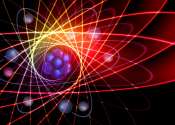Researchers find way to form diodes from superconductors
A group of researchers from Pisa, Jyväskylä, San Sebastian and MIT have demonstrated how a heterostructure consisting of superconductors and magnets can be used to create unidirectional current like that found in semiconductor ...









